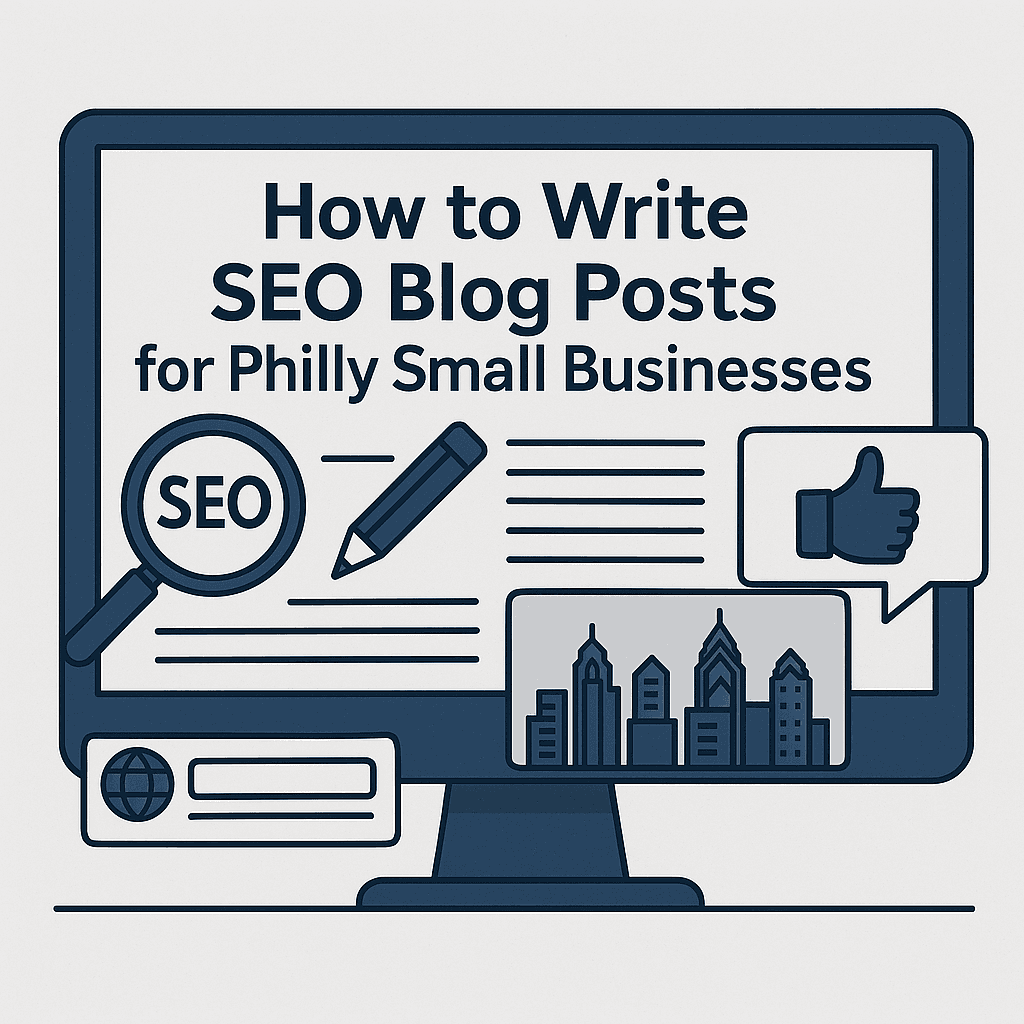How to Write SEO-Optimized Blog Posts for Your Philly Business

Published: July 19, 2025
If you're a small business owner in Philadelphia—whether you're running a café in Northern Liberties or a plumbing service in South Philly—your blog can be your most powerful local SEO weapon.
But writing SEO-optimized blog posts isn't about stuffing keywords or copying AI-generated content. It’s about strategy, structure, and giving your readers (and Google) what they’re actually looking for.
Here’s how to write blog posts that rank on Google and actually help your Philly business grow.
1. Start with a Real Keyword Strategy
Don't guess. Research.
Use free tools like Google Keyword Planner, Ubersuggest, or Answer the Public to find what your local audience is searching for. Example:
- Instead of: “Our Services”
- Use: “Affordable House Cleaning in Fishtown” or “Best Coffee Shops in East Passyunk”
Look for:
- Keywords with low-to-medium competition
- Local intent (e.g. “near me”, “Philadelphia”, “Fishtown”)
- Long-tail phrases (3–5 word searches)
✅ Include your main keyword in the blog title, first paragraph, a subheading, and the URL slug.
2. Write for Humans First, Google Second
Search engines rank useful, well-organized content. Don’t over-optimize.
Make sure your post:
- Solves a real problem (e.g. “How do I get more customers in Philly without paying for ads?”)
- Sounds natural and conversational
- Breaks up info with clear sections and headers (H2, H3)
Think of your blog as a conversation with a potential customer—not an essay for Google.
3. Use Clear Structure & Visual Hierarchy
Google loves scannable content. So do your readers.
- Use H2s for main points, H3s for supporting tips
- Write in short paragraphs (2–4 lines)
- Use bullet points or numbered lists when appropriate
Include images or graphics—just make sure they’re compressed and have alt text
✅ Bonus: Include local imagery (e.g. Philly landmarks) with SEO-friendly alt tags like alt="Fishtown storefront at sunset"
4. Add Internal & External Links
Internal links (to your own services or other blog posts) help Google understand your site structure and keep users on your site longer.
External links (to trustworthy sources) build credibility and context.
Example:
- Internal: “Check out our guide to DIY website speed hacks.”
- External: “According to Google's SEO Starter Guide...”
✅ Set external links to open in a new tab so readers stay on your site.
5. Optimize the Technical Stuff (Without Plugins)
Even if you don’t use WordPress (we don’t), you can still optimize your code.
On every post, make sure to:
- Set a unique meta title (50–60 characters)
- Write a compelling meta description (150–160 characters)
- Use a clean, readable URL slug
- Add a canonical tag if you republish elsewhere
✅ Don’t forget to submit your sitemap to Google Search Console and request indexing when you publish.
6. Localize the Content
Google loves local relevance. So do Philly readers.
Mention:
- Neighborhoods (Fishtown, Brewerytown, South Philly, etc.)
- Local events or examples
- Testimonials or stories from local clients
✅ If your blog post can’t exist in any other city without sounding weird, you’re doing it right.
7. End with a Real CTA
Always finish with a next step. You’re not blogging for fun—you’re blogging for leads.
Good CTAs:
- “Need help with local SEO? Schedule a free consult.”
- “Want a Philly-native to design your website? Let’s talk.”
Bad CTAs:
- “Hope this helped!”
- “Thanks for reading!”
Conclusion
You don’t need to be a writer or hire an SEO agency to create blog content that ranks. You just need to understand what your Philly audience is looking for—and deliver it with clarity, structure, and local relevance.
At Fishtown Web Design, we build raw-coded, lightning-fast sites with built-in SEO strategy. If you want help getting your local content to page one, we’re here for it. If you're a small business owner in Philadelphia—whether you're running a café in Northern Liberties or a plumbing service in South Philly—your blog can be your most powerful local SEO weapon.
